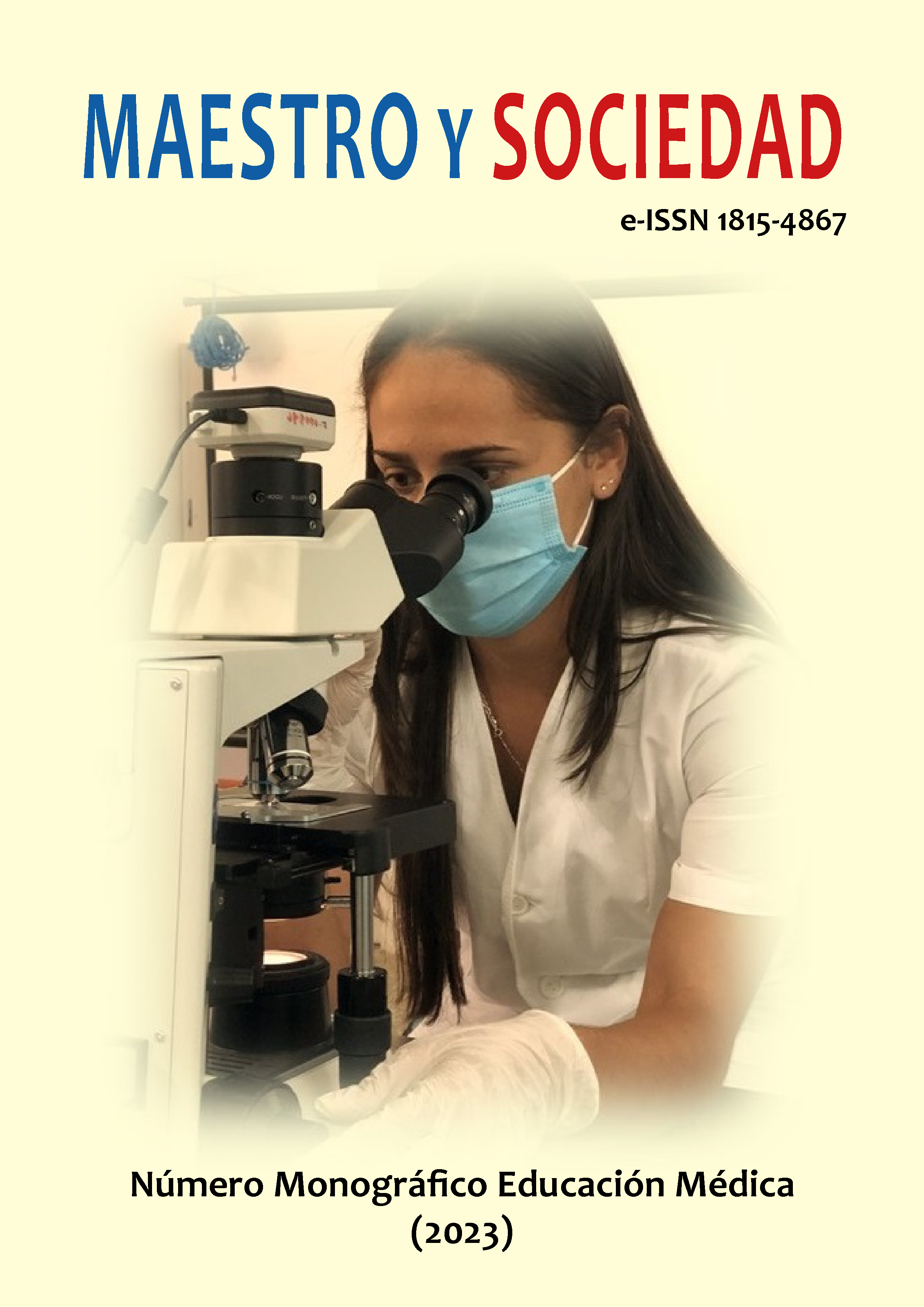Effectiveness of an educational intervention on sexually transmitted infections in military adolescents
Effectiveness of an educational intervention on sexually transmitted infections in military adolescents
Keywords:
soldiers, sergeants, sexually transmitted infections, educational intervention, and knowledgeAbstract
Introduction: Sexuality is an important part of the human being, however, multiple diseases and disorders can affect
human health and the ability to have sexual relations or enjoy them, especially in adolescents. Objective: Modify the
knowledge that sergeants and soldiers have about Sexually Transmitted Infections. Materials and Methods: A quasiexperimental study of educational intervention was carried out, which was divided into three stages: diagnosis,
intervention itself, and evaluation. A universe made up of 52 soldiers (sergeants and soldiers) from the 1st Company
of the III Tank Battalion was studied and the statistical technique McNemar Test was applied for a significance level
of p<0.05. Results: It was verified that 46 of the soldiers studied did not use condoms as a means of protection in
their sexual relations. Discussion: Sexually Transmitted Infections represent a global health problem of great magnitude,
according to the WHO, each year there are more than 250 million new cases, one in 20 people suffers or has suffered
from one of these infections. On the other hand, there are various reasons why people do not assume the change of attitudes and risky behaviors, which have the greatest weight in the appearance of these infections; but this is coupled
with individual responsibility and the actions of well-designed educational programs directed at the target population.
Conclusions: The knowledge about sexuality that the soldiers and sergeants had before the educational intervention
was inadequate, after it was applied, the perception of soldiers and sergeants regarding the main Sexually Transmitted
Infections, signs and symptoms that they produce improved significantly. , as well as control over the main modifiable
risk factors that can be controlled.
References
Alayo, I. T. (2003). Intervención comunitaria para la prevención y control de las Enfermedades de Transmisión
Sexual. [Trabajo de Master en la Atención Primaria de Salud. Policlínico “Armando García”].
Álvarez Sintes, R. (2001). Temas de Medicina General Integral. ECIMED.
Arrué Hernández, M. (2005). ¿Cómo demuestro que te amo? Programa para la formación de promotores y
promotoras de salud con énfasis en la prevención de ITS VUH SIDA. Edi CENESEX.
Bruni, L. y González, R. (2004). Infección de Transmisión sexual Prevalencia e Impacto en la Salud de las mujeres
en países de bajo recurso. Ginecología Y Obstetricia Cínica, 5(4), 221-226.
Caballero Lescay, Y. (2004). Modificación de conocimientos en pacientes vulnerables a presentar Infecciones
de Transmisión Sexual en adolescentes. [Trabajo de Especialista en 1er Grado en Medicina General Integral. Policlínico
“Carlos J. Finlay”].
Ferrer Alemán, E. (2004). Intervención educativa sobre las infecciones de transmisión sexual en adolescentes de
la comunidad haitiana. [Trabajo de Especialista en Medicina General Integral. Municipio Mella].
Herrera Hernández, R. (2004). Conocimientos sobre sexualidad humana en jóvenes de 18 a 20 años de edad de
ambos sexos que trabajan. [Tesis de Especialista de I Grado en Medicina General Integral, Policlínica Mella].
Mc-Neil, H. (2004). Guidelines for treatment of sexuality diseases. Morbidity an Mortality Weekly Report. http://
www.cdc.gou/nchstp/ 2004 std guidelines for the treatment.html
MINSAP. (2003). Manual de prácticas clínicas para la atención integral a la salud del adolescente.
MINSAP. (2008). Programa Nacional de Prevención y Control de ITS/VIH/SIDA.
OPS. (1998). Manual sobre enfoque Sindrómico de las ITS. Edición al español.
Pesant Hernández, O. y Sánchez Fuentes, J. (2004). Las Infecciones de transmisión sexual (ITS). En: Consejería en
ITS Y VIH/SIDA: Información Básica. MINSP.
Romero, R. J., Lora, M. N. y Cañete, R. (2001). Adolescentes y fuentes de información de sexualidad: preferencias
y utilidad percibida. Aten Primaria, 27, 12-7.
Traba Deliz, N. (1999). Modificación de conocimientos sobre Enfermedades de Transmisión Sexual en
adolescentes. [Trabajo de Especialista en Grado en Medicina General Integral. Policlínico “José Martí Pérez”].
Downloads
Published
How to Cite
Issue
Section
License
Copyright (c) 2023 José Fernando Carvajal Beltrán, Alina Palacios Veranes, Katia Aguilera Díaz, Onnis Del Río Pérez

This work is licensed under a Creative Commons Attribution-NonCommercial-NoDerivatives 4.0 International License.
This journal provides immediate open access to its content, based on the principle that offering the public free access to research helps a greater global exchange of knowledge. Each author is responsible for the content of each of their articles.



























 Universidad de Oriente
Universidad de Oriente 